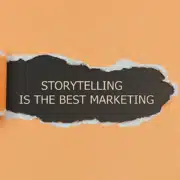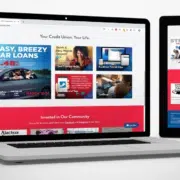5 Pieces for a Powerful Marketing Campaign
When a client asks us to create a new piece of collateral or develop a campaign or program, our typical response is “sure thing, we’ll have that to you in a couple of weeks.”
Wait, what? No, that’s not how we respond because that’s not how it works. I’m sure you knew that already. You wouldn’t build a house without blueprints, bake a cake without a recipe, or host a party without planning it out. Well, you could, but most likely your house will be missing elements you wish you had included, your cake will fall flat, and you won’t have enough food and beverages for your guests.
Instead, when starting a new project with a client, we use a project brief to help us uncover the information we need to make sure the project is a success. Project briefs are used to help us understand what the client needs and how we can best deliver. They also help us quote a project correctly, determine how long the project will take, and decide if the project is, in fact, the best course of action for the client.
The project brief helps you organize your thoughts and leads you through the process ensuring you have what you need to develop or implement successfully. Whether you work with an agency like Chartwell or are the in-house marketing person within an organization, using a project brief is the crucial first step you need to take before anything else.
Now that you know why project briefs are important, let’s walk through how to develop one. For this project brief exercise, let’s say you are the director of marketing for XYZ Community College, and you have been tasked with developing a campaign for the college’s welding program. Follow these steps to help build your plan.
List Your Goals
What do you hope to achieve with this campaign? Do you want to increase enrollment? Expand your reach or raise awareness of the program? Get specific in writing your goals as what you want to do will determine how you do it.
Determine Your Audience
You’ve decided your campaign goal is to increase enrollment in your welding program. To do that, you need to know who your audience is – potential welding students, right? Yes, and how do you know who those potential welding students are? You can narrow things down by choosing the region you want to focus on – for instance, the zip codes around your college campus. From there, consider the demographics of a typical welding student – age, sex, and ethnicity. Looking at your current student demographics can guide you here.
The Budget
What is your budget is an important question and one that often goes unanswered. Knowing your budget will help establish the next step – tactics. It will also help you determine the duration of the campaign. Knowing what you have to spend will help you build an effective plan, with no surprises.
Tactics to Use
Digital, social, print, website, direct mail, billboard, radio, TV, video – there are MANY tactics available. Because you’ve already defined your budget, audience, and goal, you are now able to choose the tactics that fit best. In this exercise, you’ve decided your campaign will use digital, social, and direct mail. You have also chosen to create a landing page to capture potential student information. Digital allows you to better reach your target audience, direct mail reinforces your digital ads, and the landing page will help you capture potential students’ information.
Plan Building and Implementation
Congratulations! You know your campaign goals, your audience, how much you have to spend, and how and what tactics you want to use. Now it’s time to build the actual plan. The plan is an invaluable resource as you launch and manage your campaign. It includes creative concepts and how they’ll be used in various mediums, messaging, ad buy schedules, and other key pieces of information.
We have developed countless marketing campaigns, each designed to fit clients’ specific needs. Typically, clients rely on us to implement the plan on their behalf, it depends on the situation. Whatever you decide to do, you now have the steps you need to either provide your agency with the information they need to develop a powerful marketing campaign or create and implement a dynamic plan on your own.








